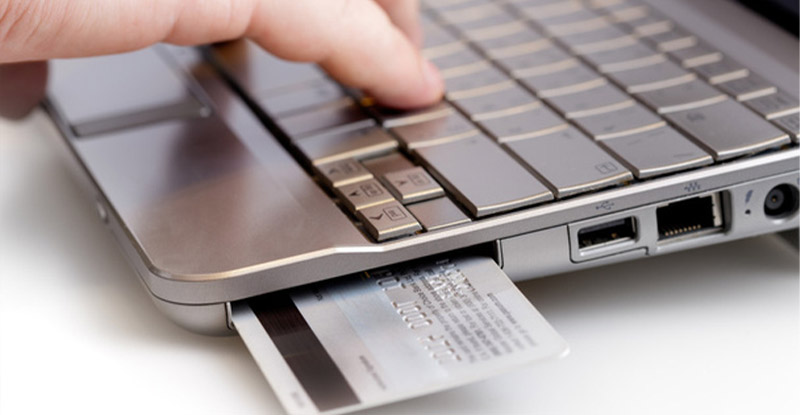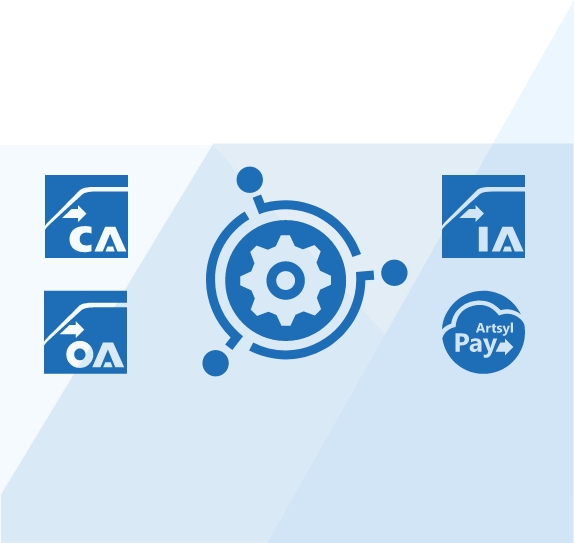As the world moves towards a digital economy, electronic payment systems are becoming increasingly common and essential for businesses. One such electronic payment system is the Automated Clearing House (ACH) network, which transfers funds between bank accounts within the United States of America.
ACH payments and transfers offer immense benefits in terms of security, efficiency, and convenience. In this blog post, we will look deeper into the ACH payment and transfer process, how this system works, and the benefits of using this method.

Unlock the power of quick processing ACH Payments with ArtsylPay!
Experience faster, more secure, and more streamlined payment transactions that boost your business efficiency. Get started today!
Understanding ACH Payments
An ACH payment transfers funds between two bank accounts using the ACH network. These transfers are typically used for recurring payments such as salaries, insurance premiums, and loan repayments. This electronic funds transfer system utilizes batch processing to settle and clear a high volume of transactions that cannot be processed in real-time.
ACH payments operate through the ACH network, a highly regulated system managed by the National Automated Clearing House Association (NACHA). The process involves the electronic transfer of funds between banks.
Intelligent Process Automation Solution
Related Videos
ACH Payment Definition
ACH payment, or Automated Clearing House payment, refers to an electronic funds transfer system used for various financial transactions, including direct deposits, bill payments, and business-to-business payments. It enables the electronic movement of funds between bank accounts within the United States.
ACH payments provide a convenient and secure alternative to traditional paper-based transactions, such as writing and mailing checks. They are typically processed in batches and involve the exchange of funds between financial institutions through the ACH network.
ACH payments are widely used across industries and are regulated by the National Automated Clearing House Association (NACHA) to ensure the safety and integrity of the payment system.
What Types of Transactions Can be Processed Through ACH?
ACH payments can be used for various transactions, including:
- Direct Deposit: Employers can use ACH to deposit salaries, wages, or benefits directly into employees’ bank accounts.
- Bill Payments: Consumers can authorize ACH payments to pay bills, such as utilities, loans, or subscriptions, on a recurring basis.
- Vendor Payments: Businesses can make payments to suppliers, vendors, or contractors electronically using ACH transfers.
- E-commerce: Online retailers can accept ACH payments from customers as an alternative to credit card payments.
- Government Payments: Government entities can utilize ACH payments for tax refunds, Social Security benefits, or other government disbursements.
Make payment delays a thing of the past as you embrace seamless ACH transactions with ArtsylPay! Discover the benefits of quick processing ACH payments and supercharge your cash flow.
Explore ArtsylPay now!
Book a demo now
Which Businesses Benefit from ACH Payments?
ACH payments benefit a wide range of businesses across different industries. Here are some examples of businesses that can benefit from using ACH payments:
Small Businesses
ACH payments offer cost-effective and efficient payment processing solutions for small businesses. ACH transactions provide a secure and convenient way to receive customer payments, make vendor payments, and handle payroll transactions.
E-commerce Businesses
Online retailers can streamline their payment processes by accepting ACH payments. ACH provides an alternative to credit card payments, allowing customers to make direct transfers from their bank accounts and reducing transaction fees and chargebacks.
Subscription-Based Services
Businesses that offer subscription-based services, such as software-as-a-service (SaaS) providers or membership-based platforms, can benefit from recurring ACH payments. It simplifies billing and ensures timely and consistent payments from customers.
B2B Transactions
ACH payments are widely used for business-to-business transactions. Companies can pay suppliers, vendors, and contractors efficiently, reducing the need for paper checks and manual processing. It improves cash flow management and enhances relationships with business partners.
Nonprofit Organizations
Nonprofits often rely on donations and contributions. ACH payments provide a secure and cost-effective method for accepting recurring donations or one-time contributions. It simplifies the donation process for donors and reduces administrative efforts for the organization.
Property Management
Property management companies can benefit from ACH payments for collecting tenant rent payments. It eliminates the need for physical checks and simplifies rent collection, ensuring timely payments and improving cash flow.
Government Agencies
Government entities, such as tax authorities or utility companies, can leverage ACH payments to collect payments from individuals and businesses. ACH provides a secure and efficient method for handling large payment volumes, reducing processing costs, and enhancing revenue collection.
Healthcare Providers
ACH payments are increasingly used in the healthcare industry for medical bill payments. Patients can conveniently pay their medical bills using ACH transfers, reducing administrative costs for healthcare providers and improving cash flow.
It’s important to note that the benefits of ACH payments can vary depending on each business’s specific needs and circumstances.
Assessing the payment requirements and consulting with financial institutions or payment processors is recommended to determine the best payment solutions for your business.
Accelerate your business payments with ArtsylPay’s. Enjoy faster fund transfers, reduced transaction costs, and improved cash management. Take your financial operations to the next level!
Book a demo now
ACH Payments and Transfers: Use Cases
ACH payments have a wide range of use cases across different industries and scenarios. Here are some common examples of how ACH transfers are utilized:
Payroll and Direct Deposits
Many businesses use ACH payments to facilitate direct deposit of salaries, wages, and benefits to their employees’ bank accounts. It simplifies the payment process, reduces the reliance on paper checks, and ensures timely and secure fund transfers.
Bill Payments
ACH payments are commonly used for recurring bill payments. Individuals and businesses can authorize ACH transfers to pay bills such as utilities, mortgages, loans, insurance premiums, subscriptions, and other regular expenses. It eliminates the need for manual check writing or card payments each time a bill is due.
Vendor and Supplier Payments
ACH payments provide an efficient way for businesses to make payments to their vendors, suppliers, and contractors. Instead of issuing paper checks or using expensive wire transfers, companies can use ACH transfers to pay invoices, settle purchase orders, and manage accounts payable.
E-commerce and Online Payments
Many online businesses and e-commerce platforms offer ACH transfers as a payment option for their customers. By providing bank account details, buyers can authorize ACH payments to complete their purchases, offering an alternative to credit card payments. This is particularly beneficial for customers who prefer not to disclose their credit card information or want to avoid transaction fees.
Rental and Subscription Payments
ACH transfers are used in rental management and subscription-based businesses. Landlords can collect rent payments directly from tenants’ bank accounts, ensuring a secure and convenient payment method. Similarly, subscription-based services, such as software subscriptions or membership fees, can be automatically billed and collected via ACH payments.
Fundraising
Organizations often leverage ACH payments to facilitate fundraising campaigns. Supporters can make one-time or recurring contributions by providing their bank account information, enabling seamless and cost-effective donations.
Government Payments and Benefits
Government entities, including tax authorities, social service agencies, and pension departments, use ACH payments for various disbursements. This includes tax refunds, Social Security benefits, retirement payments, unemployment benefits, and other government-related payments.
These are just a few examples of how ACH payments are utilized in various contexts. ACH transfers offer flexibility, cost-effectiveness, and security, making it a popular choice for businesses, organizations, and individuals seeking efficient and reliable electronic payment solutions.
Don’t let slow payment processing upset your customers and vendors. Upgrade to ArtsylPay’s quick processing payments and experience the difference.
Maximize your productivity and enhance
your financial performance!
Book a demo now
ACH Transfer Process
To make an ACH payment or transfer, the paying organization will initiate the payment to the receiving account through their bank or financial institution using ACH format. The financial institution transfers the payment order to the ACH Operator, who will forward it to the receiver’s bank. This way, ACH payments streamline payment processes, automate recurring transactions, and provide faster fund transfers than traditional methods like mailing checks.
ACH payments eliminate paper checks, offering businesses and customers a more convenient payment method. The receiver’s bank will then process the transaction and deposit the funds into the receiver’s account.
The transaction takes approximately 3 to 5 business days, enabling parties to plan and manage their finances effectively. In addition, ACH payments are often more affordable than other payment options, such as credit cards, as they typically involve lower transaction fees.
Benefits of ACH Payments and Transfers
The ACH network offers several benefits to its users.
- Firstly, they provide a secure way of transferring money, eliminating the need for physical paper checks. This system reduces the risk of check fraud, as each transaction is processed electronically without physically exchanging money. In addition, ACH payments are secure and adhere to strict industry standards and regulations to protect sensitive financial information.
- Secondly, ACH payments are cost-effective. Transactions completed through the ACH network cost much less than other payment methods like wire transfers or credit card processing fees. This cost-saving can be passed down to the customer or user.
- Thirdly, ACH transactions are highly efficient. Automated batch processing enables businesses to manage and make payments without any manual intervention. This process will help businesses save time and money, ultimately resulting in higher productivity and profits.
- Lastly, ACH payments are incredibly convenient as users can access this network through online banking, applications, or websites. This level of convenience provides flexibility and accessibility to users.
Final Thoughts: The Many Benefits of ACH Payments
In conclusion, ACH payments and transfers are efficient and cost-effective for transferring funds electronically. Through batch processing, the ACH network ensures the speedy processing of large volumes of transactions while providing security and convenience to both businesses and consumers.
Suppose you want to take advantage of ACH payments and transfers. Ensuring your business adheres to the National Automated Clearing House Association (NACHA) requirements is essential.
Overall, the ACH network has revolutionized electronic payment processing and is essential to any business looking to operate effectively and maximize profit.
Experience smooth payment processes with ArtsylPay’s quick processing of ACH and credit card payments. Enjoy seamless integration, real-time transaction updates, and enhanced security. Empower your business with faster and more efficient payments today!
Book a demo now
FAQ
What is an ACH payment?
An ACH or Automated Clearing House payment is an electronic transaction that transfers funds between bank accounts in the United States. It is a popular method used for various types of payments, such as direct deposits, bill payments, and business-to-business transactions.
How does an ACH payment work?
When an ACH payment is initiated, the payer authorizes the funds to transfer from their bank account to the payee’s account. The payment information is transmitted through the ACH network, which securely processes and settles transactions. The funds are electronically debited from the payer’s account and credited to the payee’s account.
What are the benefits of using ACH payments?
ACH payments offer several advantages: convenience, efficiency, and cost savings. They eliminate the need for paper checks, reducing manual processing and the risk of lost or stolen checks. ACH transfers are typically faster and more reliable than traditional payment methods and incur lower transaction fees.
What types of transactions can be made through ACH payments?
ACH payments are versatile and can be used for various types of transactions. They are commonly used for payroll direct deposits, recurring bill payments, vendor payments, online purchases, and person-to-person transfers. Businesses, government agencies, and financial institutions widely accept ACH payments.
Is it safe to use ACH payments?
Yes, ACH payments are generally considered safe and secure. The ACH network follows strict guidelines and security protocols to protect the confidentiality and integrity of the payment information. Additionally, many financial institutions offer fraud detection and prevention measures to safeguard customer accounts and transactions.
What is the difference between ACH and virtual credit card type of payments?
ACH (Automated Clearing House) and virtual credit card payments are two different methods of making electronic payments. Here’s a breakdown of the differences between the two:
ACH Payments:
- Process: ACH payments involve the transfer of funds directly from one bank account to another.
- Bank Account-Based: ACH payments require the payer and the payee to have bank accounts. The funds are debited from the payer’s account and credited to the payee’s account.
- Transaction Cost: ACH payments typically have lower transaction costs compared to other payment methods.
- Settling Time: ACH payments can take longer to settle compared to virtual credit card payments, usually 1-3 business days.
- Use Cases: ACH payments are commonly used for recurring payments, direct deposit of salaries or bill payments.
Virtual Credit Card Payments:
- Process: Virtual credit card payments involve generating a unique credit card number for a specific transaction. This virtual card number is used for payment instead of the actual credit card details.
- Credit Card-Based: Virtual credit card payments require the payer to have a credit card account. The payment is made using the virtual credit card number, which is linked to the payer’s credit card account.
- Transaction Cost: Virtual credit card payments may have higher transaction costs compared to ACH payments due to credit card processing fees.
- Settling Time: Virtual credit card payments can settle quickly, usually within 1-2 business days.
- Use Cases: Virtual credit card payments are often used for B2B transactions, one-time or limited-use transactions, such as online purchases, supplier payments, and temporary card authorizations.
ACH payments are bank account-based, have lower transaction costs, and are suitable for recurring transactions, while virtual credit card payments are credit card-based, settle quickly. The choice between ACH and virtual credit card payments depends on factors such as the nature of the transaction, cost considerations, and the availability of bank accounts or credit cards.
Are there any limitations or restrictions with ACH payments?
While ACH payments are widely used, there may be certain limitations or restrictions imposed by individual banks or financial institutions. These can include transaction limits, processing timeframes, and requirements for authorization or verification. It is advisable to check with your bank or payment processor for specific details and any applicable fees.
How can I set up ACH payments?
To set up ACH payments, you must typically provide your bank account information to the payee or payment processor. This information includes your account number, routing number, and account holder details. You may also need to authorize the payee to initiate ACH debits or credits from your account. Many banks and financial institutions offer online banking platforms or mobile apps where you can conveniently manage ACH payments.
Are ACH payments secure?
Yes, ACH payments are secure. They are protected by various security measures, including encryption, authentication protocols, and compliance with industry regulations such as the Payment Card Industry Data Security Standard (PCI DSS). Banks and financial institutions have strict safeguards to ensure ACH transactions’ security.
How long does it take for an ACH payment to process?
ACH payments typically take a few business days to complete. The exact timing depends on factors such as the financial institution’s processing schedule, the time of submission, and any settlement requirements.
Can businesses and organizations accept ACH payments?
Businesses and organizations can accept ACH payments by setting up the necessary infrastructure with a payment processor or financial institution. This enables them to receive payments directly from customers’ bank accounts.




 Best Practices for Smooth Online Payment Invoice Processing
Best Practices for Smooth Online Payment Invoice Processing Purchase Order Payment: What Is It
Purchase Order Payment: What Is It Top X Accounts Payable Processes to Automate
Top X Accounts Payable Processes to Automate Smart Procurement & Payments Processing
Smart Procurement & Payments Processing Affordable Care and the Role of the Payer
Affordable Care and the Role of the Payer Why Automate Accounts Payable?
Why Automate Accounts Payable?

